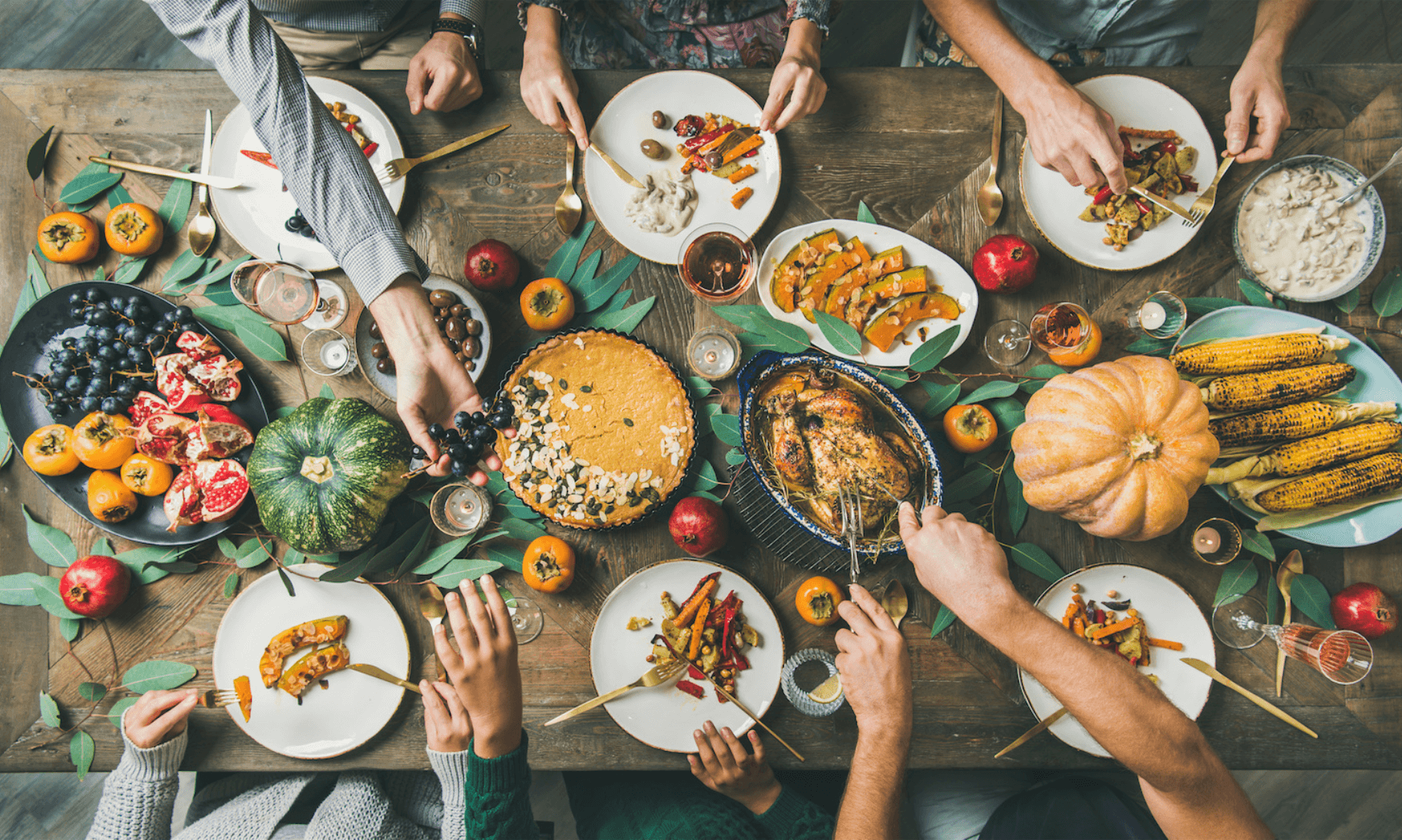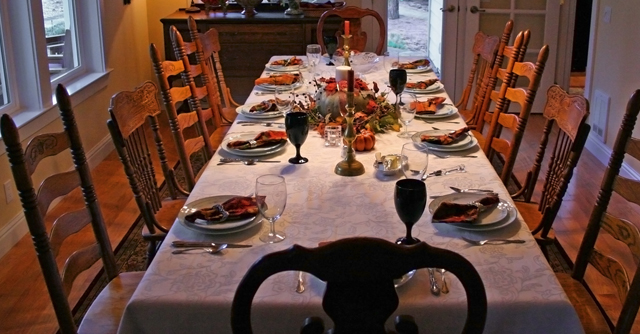Tips and recipes to celebrate Thanksgiving with diabetes

Some look forward to the Thanksgiving feast all year—and for good reason. No other holiday meal quite matches the yummy selection of treats. Celebrating Thanksgiving with diabetes is no different. People with diabetes can safely enjoy their favorites on Thanksgiving along with everyone else. You may have to take a little extra care to ensure your blood sugar doesn’t spike during this time. But that extra care pays off in plates stacked high with juicy turkey slices and all the fixings you can fit on the table.
Tips for planning a diabetes-friendly Thanksgiving feast
Planning is the key word when celebrating Thanksgiving with diabetes. Figure out where you’re going to eat and make sure you’ll have options. Making the feast at your home will obviously take a bunch of work (think of the joys of hosting!) but you will have tighter control over what you eat. Plus, with the right recipes, you can make some of the same standards everyone expects on Thanksgiving with less carbs. Most people probably won’t even notice the difference. Here are some more tips and tricks to keep in mind during the Thanksgiving smorgasbord.
Eat a balanced meal
We all want to load up on sweet potato casserole and cranberry sauce. But, with or without diabetes, that’s not the best idea. A balanced meal will look like this: half a plate of vegetables, one-quarter plate of protein, and one-quarter plate of carbs. Don’t forget the turkey!
Manage your carb budget for a well-deserved dessert
No Thanksgiving meal is complete without dessert—celebrating Thanksgiving with diabetes is no reason to skip out on the final course. Budget your carbs throughout the day to ensure you can enjoy some delicious sweets. A large, balanced meal should contain somewhere between 60 to 90 grams of carbs, so keep about 15 to 20 carbs in your back pocket for dessert.
Keep a close eye on your blood sugar
Avoid an unwelcome Thanksgiving blood sugar spike by regularly checking your glucose throughout the day, especially before and after meals. You may not notice immediately if you’ve eaten too much carb during dinner, so be sure to have a blood glucose device handy.
Know what to limit and what to enjoy
Be cautious with foods full of carbs, like mashed potatoes, bread, and cranberry sauce – focus on the treats that you don’t get other times of the year, whether it’s pumpkin pie or a scoop of stuffing.
Recipes for diabetes-friendly Thanksgiving favorites
Celebrating Thanksgiving with diabetes doesn’t mean you have to skip out on the fun stuff. In fact, proper carb budgeting means you can always have a moderate amount of your Thanksgiving favorites. However, to really let loose and get that belt-popping, nap-inducing fullness, consider these low-carb alternative recipes.
A healthier stuffing
Follow the same directions you would when making traditional stuffing. Use fat-free veggie or chicken broth instead of butter and use whole-grain bread. Adding chopped veggies full of fiber (like onions, celery, and carrots) can make stuffing even more filling and balanced.
Sweet potato casserole
This recipe requires
- Five or six whole sweet potatoes
- An orange
- A sweet onion
- Two eggs
- Two cups of pecans
- One teaspoon vanilla
- A tablespoon of cinnamon
- ¼ tbsp. nutmeg and pepper
- ½ tbsp. salt
- ½ stick of butter
- Dice the sweet potatoes and bring them to a boil. Cook until tender. They should be easily pierced with a fork when ready.
- Mash the potatoes
- Meanwhile, heat pecans at 375 degrees heat until fragrant
- Mix remaining ingredients with mashed sweet potatoes and pour into a baking dish
- Add baked pecans
-
Bake whole dish at 350 degrees for 30 minutes
Lower-carb cranberry sauce
Making your own cranberry sauce is a good way to avoid the excess sugar of store-bought versions. You’ll need
- 12 ounces of cranberries
- Orange zest
- A cup of orange juice and water (mixed to desired sweetness)
- A tablespoon of brown sugar
- A tablespoon of balsamic vinegar
- A couple star anise
- ¼ cup agave nectar
Mix ingredients together and bring to a boil over medium heat. It will be ready once the liquid is gone and the cranberries have burst. This should take around 45 minutes.
Coconut flour cornbread
Low-carb coconut flour replaces the corn meal typically used to make this southern-style shortbread. Other than that, all you will need is the typical amount of butter, eggs, cream, salt, and baking soda found in your favorite cornbread recipe. Mix into a baking dish or a cast iron skillet and bake in 400 degree heat for about 20 minutes. Your coconut flour cornbread will be ready once you can insert a toothpick into the mix and pull it out clean.
These tips and recipe ideas should keep you full and satisfied throughout one of the most treasured holidays of the year. With a little prep work, Thanksgiving with diabetes is a piece of cake ... or pie, or casserole, or cobbler.



